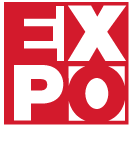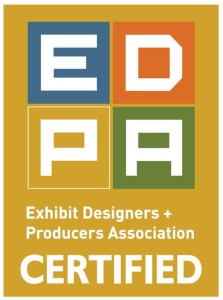In March 2014 I took a trip to Las Vegas for the Exhibitor Show. With a marketing career spanning 2 decades, I’ve been to countless trade shows and lost count of the number of trips I’ve taken to the trade show mecca around the time I stopped carrying my laptop on a plane. But this trip was a first, my virgin experience on the other side of the aisle. I was on there to sell, not to be sold…and was I prepared!
For 6 months, I’d been marketing this new-to-me product. Building new slick and shiny talking points for the company. Laying out new plans, new concepts, new angles. 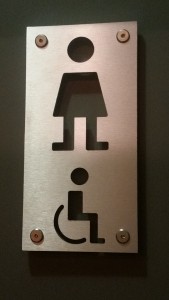 With this fresh knowledge and prep, I stood shod with a pair of comfortable but horribly unbecoming shoes, ready with my script. The ribbon was cut on the show and with our years of tenure our prime booth location provided me with my first guest in seconds. She passed the men in the booth and eagerly walked straight to me. Here it comes…the sell! But instead, “Excuse me, Do you know where the restroom is?”
With this fresh knowledge and prep, I stood shod with a pair of comfortable but horribly unbecoming shoes, ready with my script. The ribbon was cut on the show and with our years of tenure our prime booth location provided me with my first guest in seconds. She passed the men in the booth and eagerly walked straight to me. Here it comes…the sell! But instead, “Excuse me, Do you know where the restroom is?”
Fluke. Next customer.
Up comes #2, “Where’s the bathroom?” “Sigh“. I’d prepped, I’d studied, I’m ready with my script and ready for the big questions. So here comes Beeline Betty, “Pardon, but do you know how I get to show services?” What the What?!?! Come, on.
“How long does it takes to put together a MultiQuad frame? ”
“What tools are needed?”
“How is it shipped?”
Ask.Me.These.
Of course, I told pointed to the rest rooms, it’s woman code.
Perhaps being the only woman in the booth on a main aisle crowned me the Queen of info. Or maybe it was the librarian shoes that made me look extra knowledgeable? But my Vegas bet lies squarely on inferior wayfinding tools. So once we found out we’d be occupying the same space for the next show, I knew we needed a plan. Wayfinding is one of the services of our interiors division, so it’s on my radar.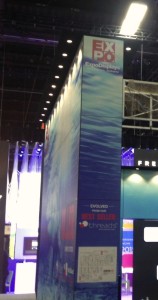
The plan was pretty simple, and as with many simple and obvious plans … IT WORKED! We embedded a show floor map in our graphics. It added another reason for traffic to stop at our booth. Were we showing competitors spaces? Yes, who cares. It’s not proprietary information. It was usable information. I asked permission from the show and then obtained a high resolution map of the show floor, altered with large red restroom symbols and built it into the edge of our display. Although I never mind providing directions, instructions and courtesy, I have to think most people really want to find that information out themselves. We made an easy way for people to get the info they needed, and we provided another reason to stop, look and engage.
So would I do it again?
Yep! Next question.
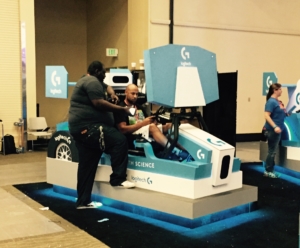 one of them. The simulator is designed with movement to engage the senses and make it a one of a kind experience for customers. The simulators were positioned in front of a towering MultiQuad® featuring the signature colors of this technology super power.
one of them. The simulator is designed with movement to engage the senses and make it a one of a kind experience for customers. The simulators were positioned in front of a towering MultiQuad® featuring the signature colors of this technology super power.


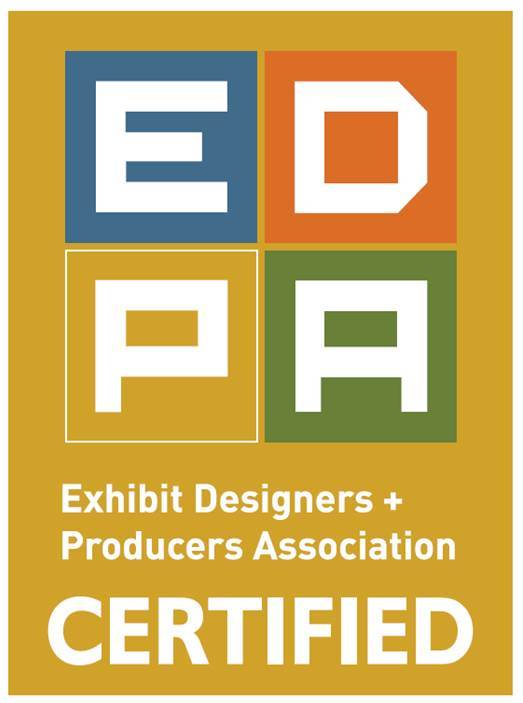 RFP Certification assures prospective clients that the member company adheres to industry standards and best practices relating to ethical business practices, industry experience and participation, fiscal responsibility and operational methodology.
RFP Certification assures prospective clients that the member company adheres to industry standards and best practices relating to ethical business practices, industry experience and participation, fiscal responsibility and operational methodology.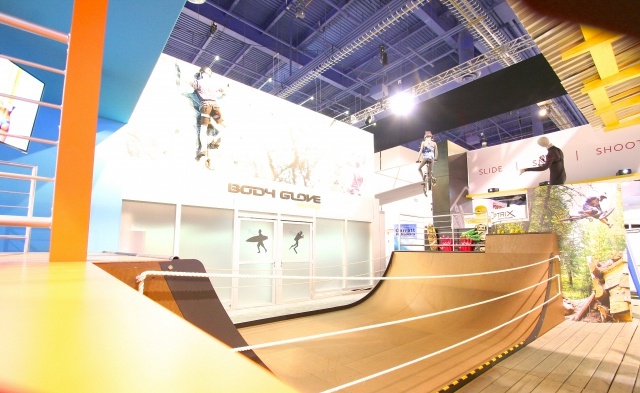
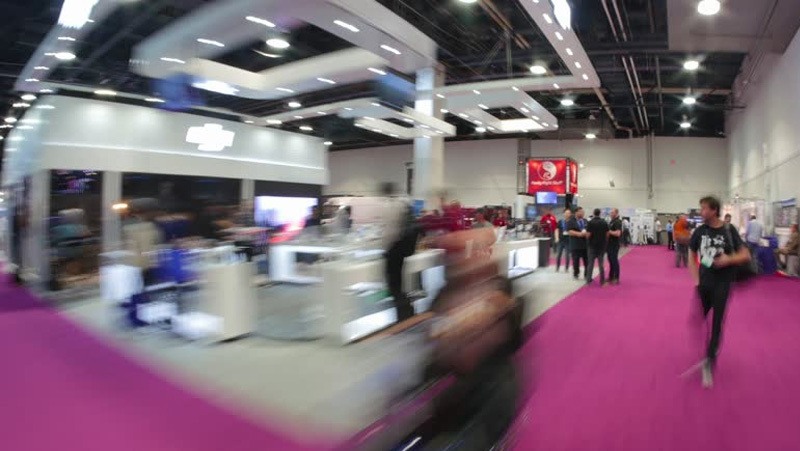 You’ve made the commitment to exhibit at a tradeshow, but many questions still follow. Here are a few tips that may help you out.
You’ve made the commitment to exhibit at a tradeshow, but many questions still follow. Here are a few tips that may help you out.